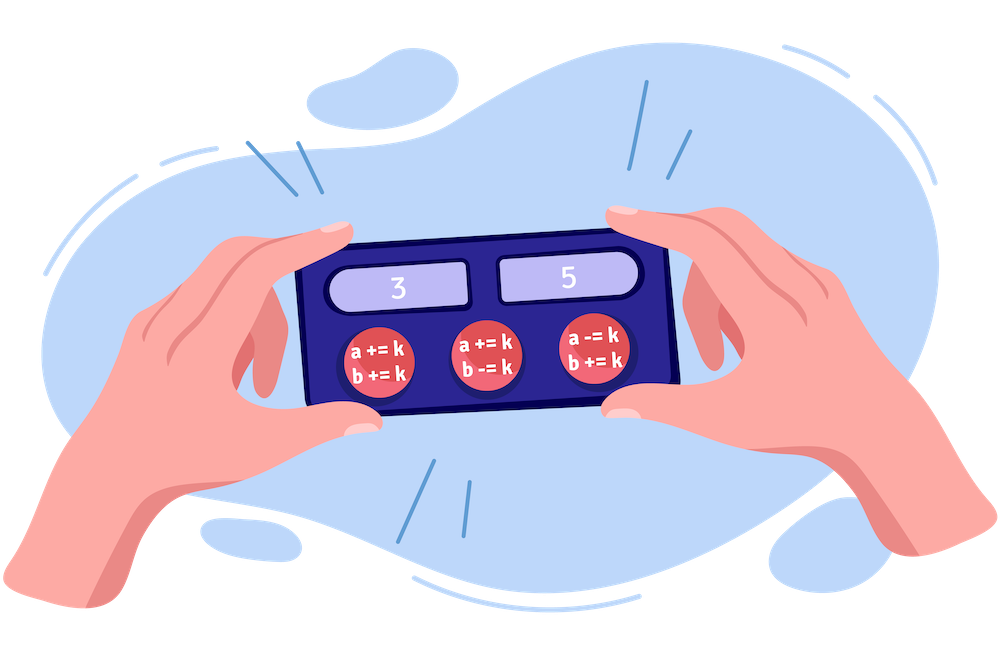Preparando MOJI

William has two numbers $$$a$$$ and $$$b$$$ initially both equal to zero. William mastered performing three different operations with them quickly. Before performing each operation some positive integer $$$k$$$ is picked, which is then used to perform one of the following operations: (note, that for each operation you can choose a new positive integer $$$k$$$)
Note that after performing operations, numbers $$$a$$$ and $$$b$$$ may become negative as well.
William wants to find out the minimal number of operations he would have to perform to make $$$a$$$ equal to his favorite number $$$c$$$ and $$$b$$$ equal to his second favorite number $$$d$$$.
Each test contains multiple test cases. The first line contains the number of test cases $$$t$$$ ($$$1 \le t \le 10^4$$$). Description of the test cases follows.
The only line of each test case contains two integers $$$c$$$ and $$$d$$$ $$$(0 \le c, d \le 10^9)$$$, which are William's favorite numbers and which he wants $$$a$$$ and $$$b$$$ to be transformed into.
For each test case output a single number, which is the minimal number of operations which William would have to perform to make $$$a$$$ equal to $$$c$$$ and $$$b$$$ equal to $$$d$$$, or $$$-1$$$ if it is impossible to achieve this using the described operations.
6 1 2 3 5 5 3 6 6 8 0 0 0
-1 2 2 1 2 0
Let us demonstrate one of the suboptimal ways of getting a pair $$$(3, 5)$$$: